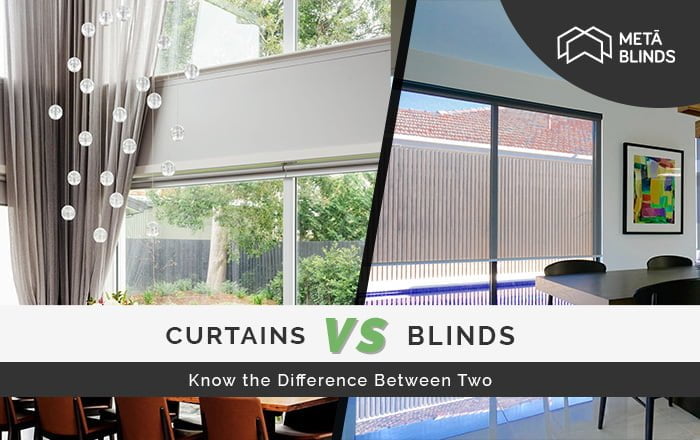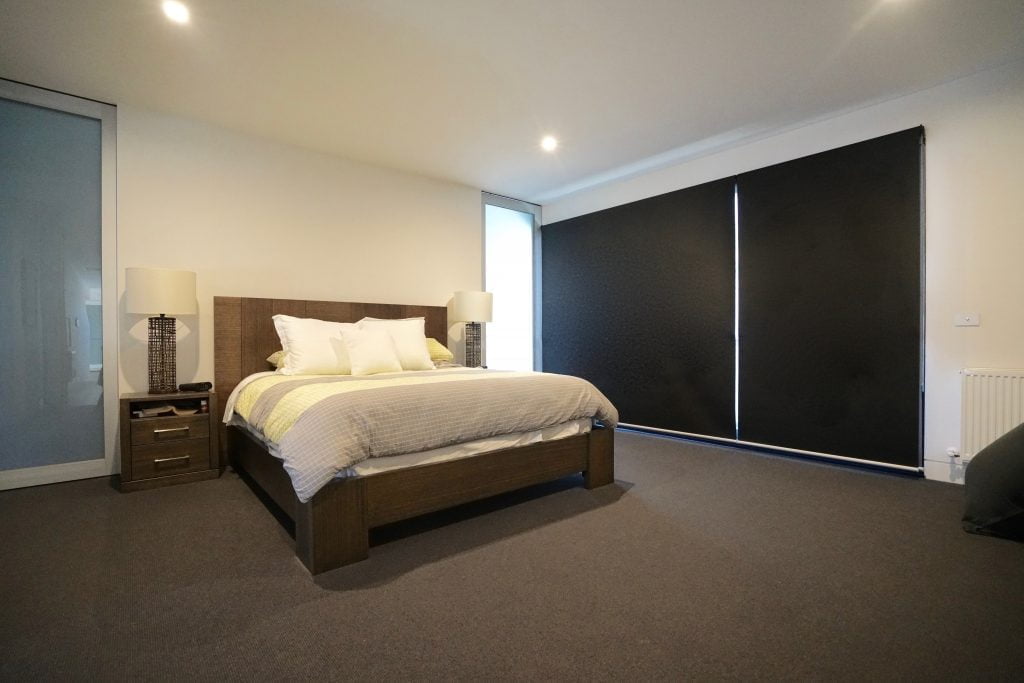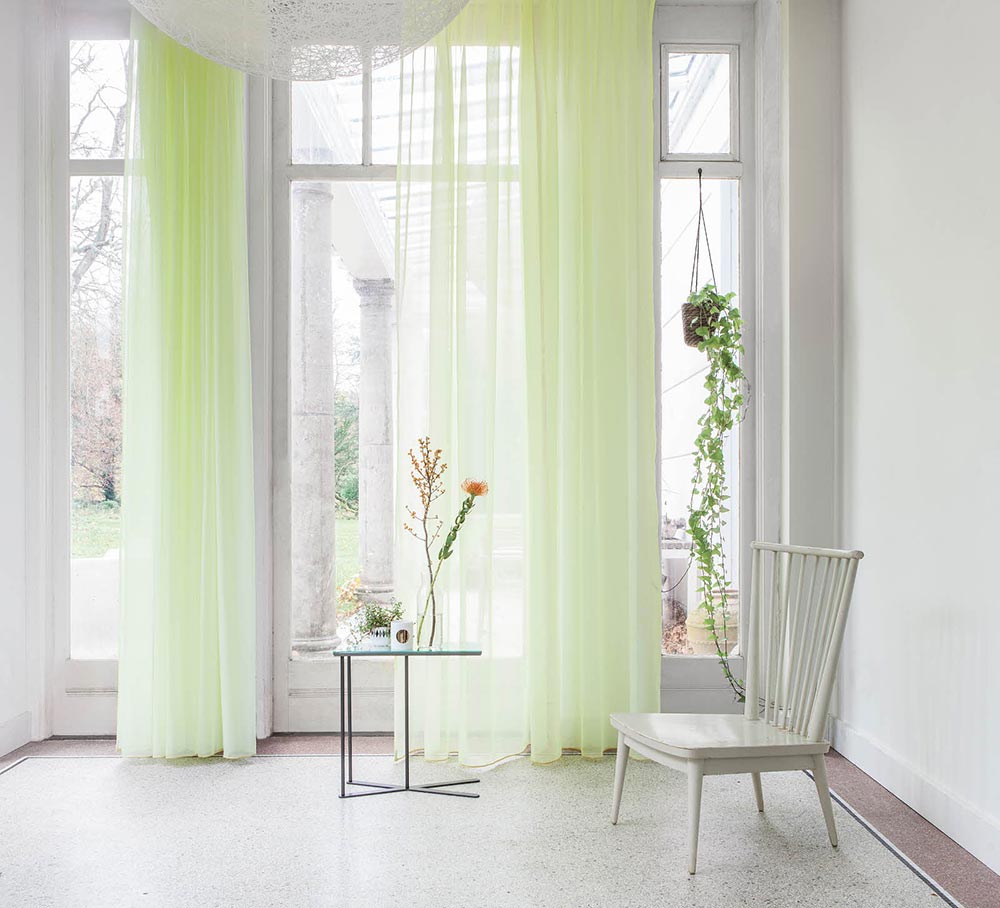Blinds Vs Curtains – Know the Difference Between the Two
By: The Meta Blinds Team, 19th Mar 2020.

Are you trying to decide between blinds and curtains for your windows? We’ll explore the key differences between these two types of window coverings to help you make an educated decision. From the materials used for each option, to the level of privacy and control over light, discover why blinds and curtains are both well-suited solutions for your window treatments.
Let’s walk through some of the pros and cons of blinds and curtains to help you with this important decision.
BLINDS
There is an amazing choice of materials, colours and textures to consider when purchasing blinds. Our expert team at Meta Blinds can help you wade through all the options.

PROS
- Vertical or venetian blinds are great for filtering in light. Blinds offer more light control options and can be adjusted to your needs, whereas curtains are either closed or open.
- Blinds give a clean, sleek and minimal look to any room. They can blend in with contemporary décor and are fitted to suit any window exactly.
- Blinds are sometimes cheaper than curtains, making them an affordable choice, which is ideal for those on a budget.
- High-quality blinds are durable as most are made using special coatings that make them resistant to discolouration and bacteria . Some products offer warranties of up to 12 years, which make them a sound investment.
- Blinds require little maintenance, and those that are made of plastic or wood simply need to be wiped down with a damp cloth and a mild soap solution, which is ideal for families when dealing with sticky little fingers.
CONS
- Unless you’re handy, installing blinds can be a challenging task and usually require an expert.
- Blinds that require a pull cord may not be the safest option around pets or small children. It’s important to ensure your blinds come with child safety devices.
- While most fabrics do offer insulating qualities, drapes and blackout curtains typically offer more insulation when compared to blinds.
- Blinds don’t completely block out the light unless they are blackout roller blinds.
Curtains are movable screens which are made by using different types of fabrics and are the most commonly used window covers as they protect the windows as well as add to the décor of the household.
Types of Blinds
Here are some of the most popular types of blinds:
Venetian Blinds
Venetian blinds consist of horizontal slats that are typically made of aluminium, wood, or PVC. These slats can be tilted to control the amount of light entering the room and can also be raised or lowered to adjust the level of privacy.
Vertical Blinds
Vertical blinds feature vertical slats that can be rotated to control light and provide privacy. They are often made of fabric, PVC, or aluminium. Vertical blinds are commonly used for large windows or sliding glass doors.
Roller Blinds
Roller blinds consist of a single piece of fabric that rolls up or down using a spring mechanism or a chain pulley system. They are simple and versatile, offering various degrees of light control and privacy.
Roman Blinds
Roman blinds are made of fabric and fold into pleats when raised. When lowered, the fabric lies flat, providing privacy and blocking out light. Roman blinds add a soft, elegant touch to a room and are available in a wide range of colours and patterns.
Cellular or Honeycomb Blinds
Cellular blinds have a unique honeycomb structure that traps air, providing excellent insulation. They are energy-efficient, reducing heat loss in winter and heat gain in summer. Cellular blinds come in various opacities and can be raised or lowered from both the top and bottom.
Pleated Blinds
Pleated blinds are made of fabric that forms neat, accordion-like pleats when raised. They are lightweight and versatile, offering a softer look compared to venetian or vertical blinds. Pleated blinds are available in a variety of colours and patterns.
Panel Blinds
Panel blinds consist of large fabric panels that slide on a track system. They are commonly used for covering large windows, sliding doors, or as room dividers. Panel blinds offer a contemporary and sleek appearance.
Sheer Blinds
Sheer blinds combine sheer fabric panels with solid fabric panels, allowing light to filter through while maintaining privacy. They create an airy and ethereal look in a room and are often used in conjunction with curtains or drapes.
Bamboo or Woven Wood Blinds
Bamboo or woven wood blinds are made from natural materials such as bamboo, rattan, or jute. They provide a warm and organic look to a space, and the varying degrees of light filtering depend on the tightness of the weave.
Curtains

PROS
- Curtains provide you with a good level of privacy from passersby. They also block out the glare of the sun, which is helpful for getting a good night’s sleep.
- Curtains provide an extra layer of insulation for your home, helping to keep it warmer in the winter and cooler in the summer. This can help you save money on your energy bills each year.
- Curtains are a great way to add aesthetics to any room. Whether you choose printed, patterned, sheer, or dark curtains, you can easily find the perfect style to match your decor.
- Most curtains are easy to take down and rehang, making them suitable for cleaning or repurposing.
- Heavy curtains can help to muffle noise from the outside world, which is perfect if you live in a noisy neighbourhood.
CONS
- While both curtains and blinds require regular cleaning and maintenance, dust and pollutants such as fluff and pet hair are more likely to cling to curtains so this is something to consider for people suffering with allergies.
- Curtains can provide privacy, but they may not be enough to keep out prying eyes or light from the outside as curtains don’t always fit perfectly over the window. More opaque curtains may be necessary for truly private windows.
- Some curtains are made of fabric which can be damaged by sun exposure, water, or other elements and are prone to mould or staining. The colours of curtains can also fade over time due to sun exposure. It’s best to buy curtains from a specialist as they tend to offer better quality fabrics compared to Ikea or a hardware store
- In small rooms, curtains can intrude on a space and make it feel smaller.
Types of Curtains
Here are some common types of curtains:
Tab-Top Curtains
Tab top curtains feature fabric loops or tabs along the top, through which the curtain rod is threaded. They have a casual and relaxed appearance and are suitable for lightweight fabrics.
Rod Pocket Curtains
Rod pocket curtains have a sewn pocket at the top where the curtain rod is inserted. This creates a gathered or ruffled effect along the top. They are versatile and can be made from various fabrics.
Grommet Curtains
Grommet curtains have metal-ringed openings along the top through which the curtain rod is threaded. The grommets create a contemporary and streamlined look, and the curtains slide easily along the rod.
Pinch Pleat Curtains
Pinch pleat curtains have evenly spaced pleats at the top which are created by pinching the fabric together. They provide a classic and formal appearance and can be used with or without curtain rings or hooks.
Eyelet Curtains
Eyelet curtains, also known as ring top curtains, have metal rings at the top that the curtain rod passes through. They create a modern and clean look and are suitable for lightweight to medium-weight fabrics.
Sheer Curtains
Sheer curtains are made from translucent or semi-transparent fabric that allows light to filter through while still providing some privacy. They add an airy and ethereal touch to a room and are often used in combination with other curtain types.
Blackout Curtains
Blackout curtains are designed to block out light and provide maximum privacy. They are made from heavy, opaque fabrics or have a special lining that prevents light from passing through. Blackout curtains are commonly used in bedrooms or media rooms.
Thermal Curtains
Thermal curtains have a special lining that helps to insulate the room, blocking drafts and reducing heat transfer. They can help regulate the temperature and save energy by keeping the room cooler in summer and warmer in winter.
Valances
Valances are decorative curtain toppers that are placed above the main curtains. They add a finishing touch to the window treatment and come in various styles, such as scalloped, pleated, or swag valances.
S-Fold Curtains
S fold curtains are highly functional. The wave-like folds allow the curtains to stack neatly when opened, maximising the view and allowing ample natural light to enter the room. When closed, S-Fold curtains provide excellent privacy and light control, as the continuous folds ensure smooth and even coverage across the window.
Now you know the difference between blinds vs curtains
As you can see, there are many things to consider when decorating your windows. Curtains and blinds offer different looks and functionalities to any room. Curtains can be more decorative by adding movement and a graceful appeal, while blinds are more practical and provide more options in light control.
Ultimately, the choice between blinds vs curtains depends on the style and function desired for the window treatment.
Find the ideal window decoration for your house by weighing the benefits and drawbacks of blinds and curtains with Meta Blinds! To find out more and choose the best option for your space, browse our selection of curtains and blinds.



